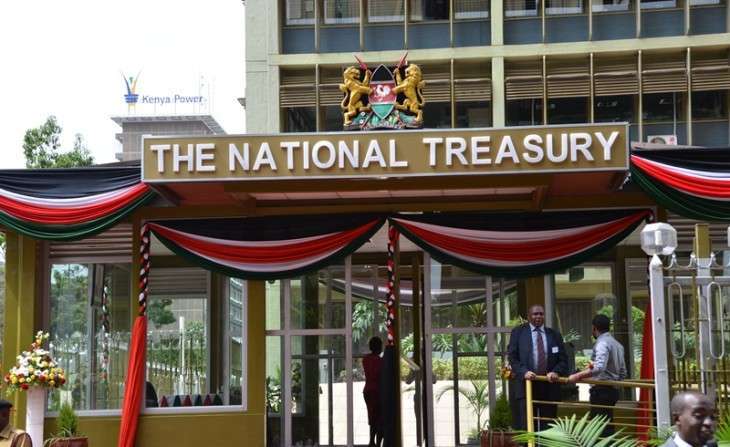Mbadi Explains Strategy to Pay Kenya’s Ksh11.8 Trillion Debt
Mbadi Explains Strategy to Pay Kenya’s Ksh11.8 Trillion Debt
Share
Treasury Cabinet Secretary (CS) John Mbadi has revealed that Kenya’s public debt has reached Ksh 11.81 trillion, equivalent to 67.8 percent of the country’s Gross Domestic Product (GDP) as of June 2025.
Addressing financial journalists in Nairobi on Monday, the CS said the debt, though assessed as sustainable, remains under a heightened risk of distress due to global and domestic financial pressures.
According to Mbadi, the current debt composition shows that Ksh6.33 trillion is owed to domestic creditors, while Ksh5.48 trillion constitutes external obligations to development partners and international lenders such as the World Bank, African Development Bank (AfDB), China, and Eurobond holders.
In present value terms, he said, the debt-to-GDP ratio stands at 63.7 percent, reflecting Kenya’s efforts to stabilize its fiscal position despite economic headwinds.
During the 2024/25 financial year, Kenya spent Ksh1.72 trillion on debt servicing, Ksh1.14 trillion to domestic lenders and Ksh579 billion to external creditors.
Mbadi said the Treasury had adopted “a suite of liability management operations” aimed at refinancing high-cost obligations, extending debt maturities, and increasing uptake of concessional financing to enhance sustainability.
Treasury Pursues Prudent Debt Strategy
He emphasized that sound and prudent debt management is central to his stewardship, anchored on protecting essential public services and restoring fiscal space to stimulate growth.
“Our goal is to fortify Kenya’s economic sovereignty and promote intergenerational equity,” Mbadi stated.
He said the 2025 Medium-Term Debt Management Strategy (MTDS) prioritizes the lengthening of debt maturity profiles and minimizing exposure to interest rate and exchange rate fluctuations.
Under the plan, 25 percent of borrowing will be sourced externally, while 75 percent will come from the domestic market, a shift meant to reduce vulnerability to global shocks.
Structural Reforms and Fiscal Discipline
Mbadi reaffirmed that ongoing fiscal consolidation and structural reforms will help ease the debt burden over the medium term.
He said the government has embarked on revenue mobilization measures; including the rollout of the Medium-Term Revenue Strategy (MTRS) and reforms under the Public Debt Management Office (PDMO), to improve transparency and accountability.
According to the Central Bank of Kenya, public debt has grown steadily due to infrastructure investments, exchange rate depreciation, and high borrowing costs in the Eurobond market.
While debt remains sustainable, fiscal risks persist if growth projections are not met.
Monthly Engagements to Enhance Transparency
In a move to deepen public understanding of Kenya’s fiscal situation, Mbadi announced plans to engage financial journalists on a monthly basis.
He said these forums will foster “an informed and constructive discourse on the country’s economic trajectory” and help citizens grasp the complexities of public debt.
The CS reiterated his commitment to transparency, saying, “Debt is not inherently bad, what matters is how we manage it. Through prudent borrowing, strategic refinancing, and fiscal discipline, we can maintain stability while driving economic growth.”

The National Treasury building in Nairobi CBD. PHOTO/CBD.
You Might also Like










